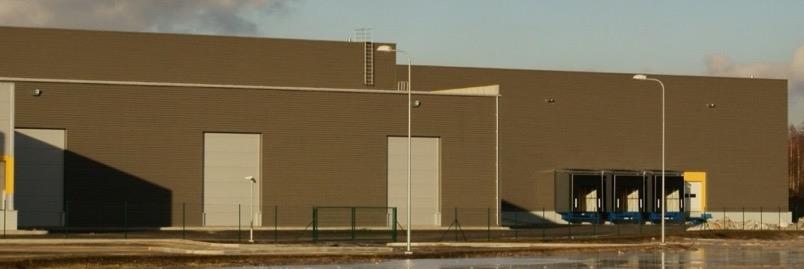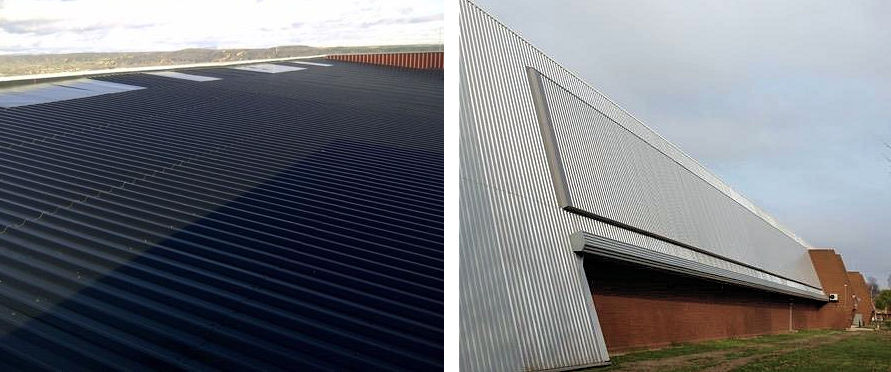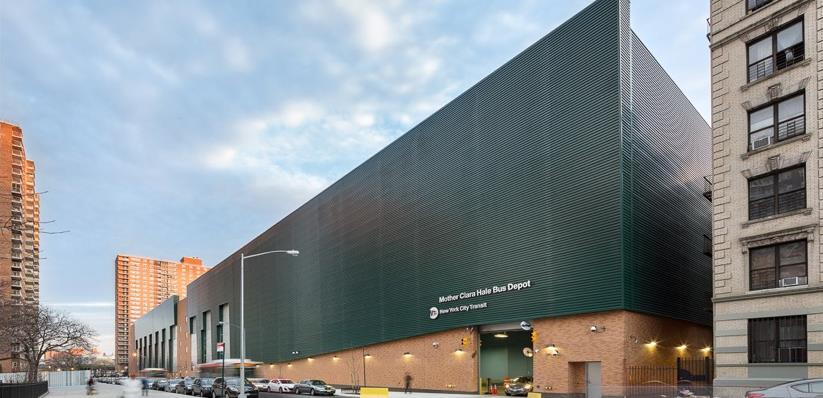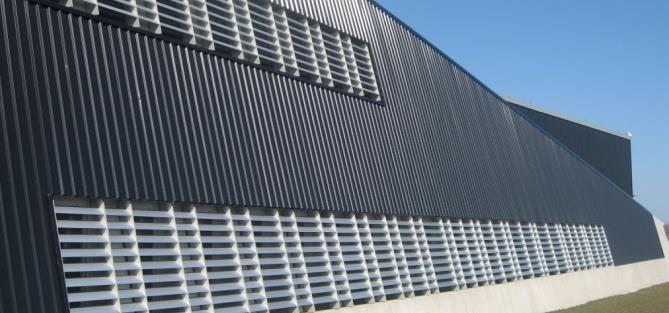Brief Concept Description
SolarWall heating systems heat air used for ventilation and heating of buildings. SolarWall consists of a perforated metal panel absorber that is integrated into sun facing walls of large buildings and connected to the heating ventilation fans. The system has been available since the 1990's, with particularly positive results in climates where space heating represents a large share of the building´s total consumption.
Architectural and Technological Integration into the Envelope
SolarWall is a building integrated solution and, once installed, resembles other typical metal wall facades. The metal panels are spaced out several centimetres to create an air cavity with the main wall. This air cavity is then connected to the building’s ventilation fans or HVAC units. The solar panel components are assembled on site to suit the existing wall dimensions and openings such as windows and doors.
The air collectors are unglazed or partially glazed depending on the desired temperature rise. The unglazed wall sections offer architects the ability to select from a range of dark colours, with black and dark brown being the most popular. Experience gained from thousands of installations over two decades shows that the durability and aesthetics of the wall are key factors in deciding whether to proceed with a solar heating technology. The ability to work with colours and shapes appeals to the design community for many higher profile buildings. Building integration allows the solar heating system to blend in and not become an eye sore. Some clients have resorted to including logos or sun images on their walls to identify it as being a solar heating wall rather than just another wall. The air collectors have virtually no maintenance, which is especially relevant considering the long-term operation of such systems, typically several decades.
Integration into the Building: System and Comfort
All projects require coordination with the designers and installers for the panels, mechanical equipment and controls to achieve complete integration into the building and its heating and ventilation and controls systems. The SolarWall systems are daytime heaters using the solar energy when available. Heat storage is not generally an option due to higher costs and the fact that most commercial, industrial, school and government buildings have minimal occupancy at night. It is necessary to have auxiliary heat in buildings. The solar heat is programmed to be the first choice followed by the auxiliary heat when solar is insufficient to meet demand. Typical overall energy savings with SolarWall are designed to be in excess of 20%. However, some buildings have reported savings over 50% without heat storage.

Figure 02. SolarWall installation on a warehouse in Latvia.

Figure 03. Roof-mounted SolarWall on a hospital in Spain (left) and Jaguar/Land Rover training centre in England with grey collectors to match the colour of the main wall (right).

Figure 04. Dark green SolarWall collectors on three walls of a bus garage, New York City.

Figure 05. SolarWall installation on the Greater Toronto airport authority building, Canada.
Further Reading
Company Website: http://solarwall.com